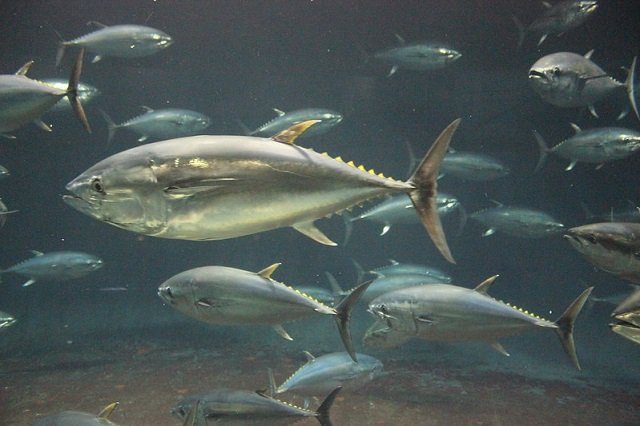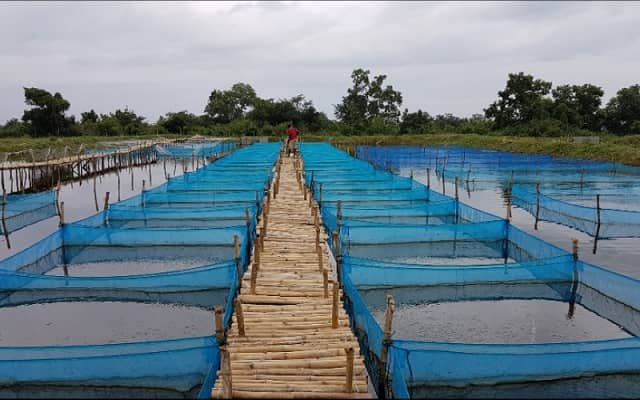
By 2050, the world population is expected to reach nearly 10 billion. Feeding everyone will require a significant increase in food production, including proteins. Aquatic protein, derived from fish and seafood, is a crucial source, but traditional fisheries face challenges such as overfishing.
Aquaculture has become a key factor in food security. While capture fisheries have stagnated, aquaculture production has boomed. However, intensive aquaculture can have negative environmental impacts.
In this context, Integrated Multi-Trophic Aquaculture (IMTA) has emerged as an option. Researchers from the University of Algarve (Portugal), ALGAplus (Portugal), and Decerna Limited (United Kingdom) published a scientific review to address the challenges of applying Life Cycle Assessment (LCA) to IMTA systems, identify gaps, and offer suggestions for better system representation on the LCA platform.
IMTA: A Sustainable Approach
IMTA offers a more environmentally friendly way to farm seafood. It is a circular system where different aquatic species are co-cultivated. The waste from one species becomes food for another. That is the basic principle of IMTA. By co-cultivating different organisms, such as fish, algae, and shellfish, IMTA creates a closed-loop system.
- Fish produce waste containing a variety of nutrients.
- Algae and shellfish filter these wastes, acting as natural biofilters.
- This not only reduces pollution but also provides a nutrient source for the entire system, promoting growth.
Benefits of IMTA Systems
Reduced environmental impact: The waste products of fed species become food for others in the system, minimizing pollution and nutrient accumulation.
- Increased productivity: By utilizing diverse resources and minimizing waste, IMTA can be more productive than traditional aquaculture.
- Economic advantages: IMTA farms can potentially produce multiple products (fish, algae, shellfish), increasing profitability.
- Social benefits: By minimizing environmental impact, IMTA promotes a more sustainable approach to seafood production.
Challenges and Opportunities
IMTA requires more complex management than traditional aquaculture. Additionally, Life Cycle Assessment (LCA), a tool for measuring environmental impact, has limitations when applied to the multi-product nature of IMTA.
Research is being conducted to address these challenges and improve LCA for IMTA. This will help us fully understand the environmental benefits of this sustainable aquaculture approach.
Life Cycle Assessment (LCA): Measuring Sustainability
LCA is a valuable tool for assessing the environmental impact of IMTA. It allows researchers to evaluate the entire life cycle of the system, from production to harvest.
Stay Always Informed
Join our communities to instantly receive the most important news, reports, and analysis from the aquaculture industry.
The scientific review analyzed 29 LCA studies on IMTA conducted between 2009 and 2022. This research identified key challenges and opportunities:
- Challenges: Defining the functional unit (the basis of comparison) and selecting appropriate methodologies within the LCA framework can be complex for IMTA systems due to their multi-product nature.
- Opportunities: Developing an LCA database specific to the aquaculture sector, along with standardized data collection methods and impact category definitions, would improve the consistency and comparability of future studies.
- Recommendations: The review suggests exploring various options and conducting sensitivity analyses to refine the LCA methodology for IMTA systems. It also highlights the need for standardized data collection methodology and an aquaculture-specific LCA database to improve data consistency and enable better comparisons.
Conclusion
“IMTA systems have the potential to have a lower environmental impact compared to monoculture systems. Feeds, fish effluents, and energy use are the factors that contribute most to impacts, and improving these factors could also improve the total impacts of IMTA systems,” the researchers conclude.
IMTA is very promising for the future of aquaculture. By promoting sustainable practices and environmental responsibility, IMTA can help ensure a healthy and abundant supply of seafood for generations to come.
The study was funded by the INTEGRATE project – FEDER through the INTERREG Atlantic Area Program 2014-2020 and the “Blue Bioeconomy Pact” within the WP5 Algae Vertical, funded by the European Next Generation EU Fund and the Portuguese Recovery and Resilience Plan (PRR).
Contact
Lais Galileu Speranza
GreenCoLab – Associação Oceano Verde, Universidade do Algarve
Campus Gambelas, Ed. 2, Gab 2.1, Faro 8005-139, Portugal
Email: lsperanza@greencolab.com
Reference
Hala, A. F., Chougule, K., Cunha, M. E., Caria Mendes, M., Oliveira, I., Bradley, T., Forbes, J., & Galileu Speranza, L. (2024). Life cycle assessment of integrated multi-trophic aquaculture: A review on methodology and challenges for its sustainability evaluation. Aquaculture, 590, 741035. https://doi.org/10.1016/j.aquaculture.2024.741035
Editor at the digital magazine AquaHoy. He holds a degree in Aquaculture Biology from the National University of Santa (UNS) and a Master’s degree in Science and Innovation Management from the Polytechnic University of Valencia, with postgraduate diplomas in Business Innovation and Innovation Management. He possesses extensive experience in the aquaculture and fisheries sector, having led the Fisheries Innovation Unit of the National Program for Innovation in Fisheries and Aquaculture (PNIPA). He has served as a senior consultant in technology watch, an innovation project formulator and advisor, and a lecturer at UNS. He is a member of the Peruvian College of Biologists and was recognized by the World Aquaculture Society (WAS) in 2016 for his contribution to aquaculture.



